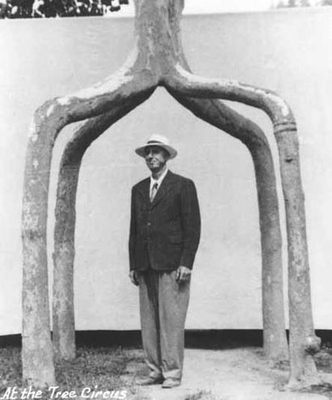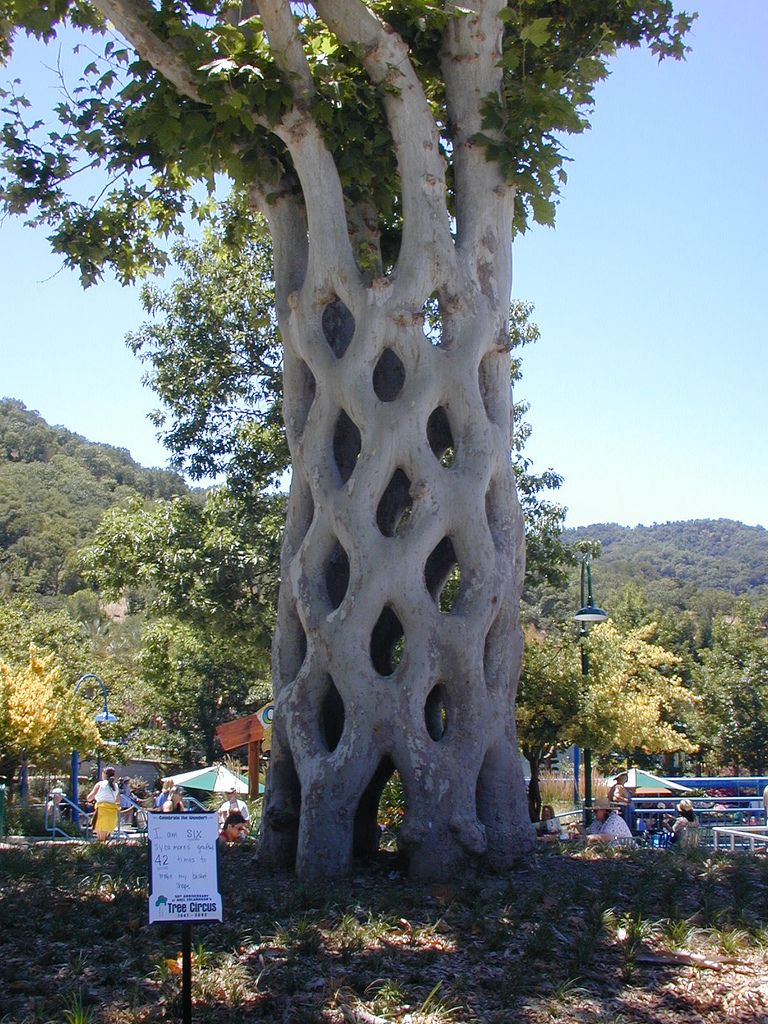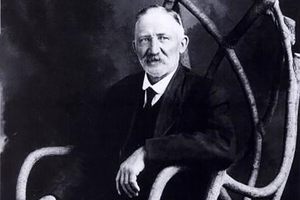About
Axel Erlandson never intended to create a new genre of shaping trees or become the father of an art movement. He just wanted to entertain his family.
As young boy, the Swedish born Erlandson's family settled in California. Axel grew up become a bean farmer, married his wife Leona in 1914 and had a daughter. That might have been the end of the story, had Erlandson not noticed the curious property of trees to naturally graft themselves together.
Known as inosculation, it occurs when one tree bonds to another. This gave Erlandson an idea and he began creating plans for a series of trees that were purposely grafted together to create pleasing shapes. It wasn't fast, taking many years to gently shape, graft and prune the trees, but it was satisfying and the odd trees amused his friends and family. His first creation was the "Four Legged Giant," four trees which he grew combine into a single truck creating a kind tree-gazebo.
In 1945, twenty years after Erlandson had begun his hobby,his wife and daughter mentioned seeing people paying to see such oddities as tilted buildings at the Mystery Spot. They returned home and mentioned (off hand) that Axel's trees could draw people who would pay to see them if they were on a well-traveled tourist route. Erlandson loved the idea, moved his trees to a new location and sent some pictures of his unique trees to Robert Ripley. Ripley was impressed and rightly so; Erlandson had grown a tree that split into a cube, a tree that had two trunks forming an arch, and a tree (six, actually) that was woven like a basket, among others. No one had ever seen anything like it and Ripley featured it in his magazine 12 times. When asked how he did it, Erlandson refused to divulge his secrets and said simply "I talk to them."
Nonetheless, the tree circus was a not much of a financial success, and in 1963 Erlandson sold the property, trees and all, and died shortly thereafter. It wasn't long before all 70 trees were forgotten and by 1977 only forty of the unique specimens remained. These were all scheduled to be bulldozed to create a mall.
Luckily for the trees, and for the world, they were saved from this fate by Michael Bonfante, owner of Nob Hill Foods. Bonfante, a horticultural connoisseur, opened a theme park and in 1985 relocated the trees to what is now known as Gilroy Gardens.
Today 25 of Axel Erlandson's trees are on display at Gilroy, and Erlandson's first creation, the Four Legged Giant remains alive and well at the park, some 80 years after it was begun.
In the years since his death, Erlandson's creations have inspired numerous other Tree shapers and in 2005 a Japanese expo was devoted to these horticultural creations of "Circus Trees". With the increasing focus on sustainable living and green building, Erlandson's tree structures may prove to be more relevant than anyone previously imagined.
Remaining, but dead, examples of the Circus trees can also be seen at the Visionary Art Museum in Baltimore, Maryland and the Santa Cruz art museum.
Related Tags
Published
August 8, 2009



















































